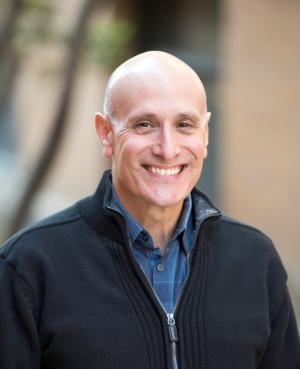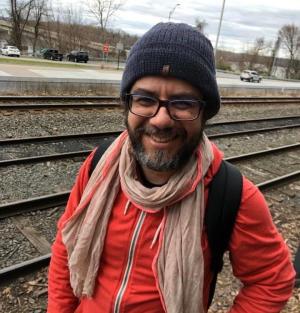Resources

I teach a course on the ethics of world religions which takes a narrative approach. Rather than just focusing on the text and tenets of religions in relationship to ethics, the course also highlights the life stories of “exemplars” from various religious perspectives. These have included civil rights activist Malcolm X, Buddhist monk Thich Nhat Hanh, and Liberian Nobel Prize winner Leymah Gbowee. The advantage of using this approach is that it gives flesh to sometimes abstract principles, demonstrating that all ethics are situational and depend on one’s positionality. These are complete human beings, so they show both human potentiality and human frailty. One particularly thorny exemplar we focus on in the course is Mohandas Gandhi. Students study his life, from his early years to his education in Britain, work in South Africa, and finally his years of leading the movement for Indian independence. They also read selections from his writing, delving into his views on ahimsa or non-killing, satyagraha or “truth force,” the caste system, and his tactics of nonviolent noncooperation. Gandhi’s negative views of Black South Africans when he lived there are an issue in his history that cannot be ignored. Invariably the question arises, was Gandhi a racist? Throughout the course, I emphasize the value of dialogue over debate when discussing religious perspectives; I wanted to create a forum where students could engage this question in a way that developed their ability to give careful attention to others’ perspectives—a space where dialogue around these differences could lead to greater understanding. The process I use to accomplish this learning strategy begins with dividing the students into pairs and providing them with two short newspaper articles on the subject. While these are not opinion pieces, each article has a particular bias—one towards naming Gandhi as a racist and the other towards seeing him as evolving on issues of race over his lifetime. Each student in the pair is asked to read one of these articles, and to identify the “slant” of the author and the particular points that support the author’s perspective. Each student in the pair then presents this view to their partner as if the view was their own. In other words, one student presents the view that Gandhi had racist views and should be held accountable for them while the other student argues that his views on race evolved and he remains of role-model for social change. We then move to a large group discussion where I pose the following questions to the class: How did you feel about the position to which you were assigned? How did it impact your reading of the articles? Did any point made by your partner make you think differently about the topic? Every time I lead this activity, students are able to name various points made by their partners that provide fresh insights into the controversy. Finally, I create a continuum in the classroom, with one end being “Gandhi was racist” and the other end being “Gandhi is a role-model.” I invite students to stand up and place themselves somewhere on the continuum and share the reason they have placed themselves at that point. I use the continuum because it permits students to nuance their opinion, to move away from binary, either/or thinking on the issue. This past fall, the activity took on added significance given that our campus is only a few miles from the site of George Floyd’s murder at the hands of Minneapolis police. Since the student population of Augsburg University is nearly 60 percent BIPOC, questions of race and racial justice are not merely academic ones. This activity provided students with a space to explore the mixed history of religions on racial oppression in a manner that neither excuses that history nor uses it to dismiss the positive impact of religions on social justice movements. In the final analysis, students may not change their views about Gandhi’s legacy around race, but their views often become more nuanced and they increase their ability to recognize complexity and ambiguity around these issues. The ability to embrace complexity, ambiguity, and the humanity of all is important for understanding religions as well as for our current fraught and polarized political environment. Photo by Claude Piché on Unsplash
What conditions prepare schools and classrooms for racist and other harmful events? What knowledges are needed to create spaces of compassion, confrontation, and moral accountability? What do students know and what do they need to know when issues of injustice, inequity and transformation must be faced?

I am consumed by grief. At home in Brazil, the situation is horrendous and bodies are piling up, as it was here in the US last year. We will soon surpass 3 million deaths around the world due to COVID-19. People who lived their lives in so many ways. So many people have been taken from us, dear friends that left us before their time. Just this week, the mother of a dear friend, Rosevarte, left us. His pain and mourning are raging rivers whose strength he does not yet fully understand. And David, who lost his entire family one by one, just like that. First it was his mother, then his sister, and then another sister. All in less than two weeks. His grief silenced him and today he struggles to find words that might stubbornly bring him back to life in the midst of death. We are a world mourning because of a virus. But more than that, we are a world mourning governments that deliberately seek out, create, and cause death. A world whose governance takes the form of genocide and whose ruler is the primary cause of death. We are a world mourning because of a virus. But more than that, for many the virus is just another wave of well-known histories of colonization. Everywhere, we hear about the death of poor people, everywhere. While we feel like this pandemic is subsiding in the US, it’s not the same around the world. I hear 85 countries don’t have access to vaccines or money to buy them. This is a third of the world and at least half of the world’s population! Unless the whole world is vaccinated, we will continue to wrestle with an endemic situation. In Latin America there are estimated 231 million people living in poverty due to COVID, without access to clean water or food security, who will become refugees in the coming winter. We are a world in mourning because of a virus. But more than that, we have lived fully into many forms of dominium over people, the earth, animals, and oceans. Dominium brought us COVID. Our mourning is our perpetual banishment and our historic undoing. In our grief we learn that we are not what we thought we were and know that we will not be what we want to be. Our desires are trapped in our interdictions and are sabotaged by stories that we did not want to read, an economic system that both alienates us and intensifies our desires until they’re impotent. We destroy the earth with myriad forms of extractivism depleting so many forms of life, while financial markets skyrocket. No coincidence: the growth of financial markets demands extinguishing jobs, exploitation of people, erasure of social welfare, extinction of animals, mountains, and human lives. Grief is undoing our social fabric of relationality, solidarity, and mutual sustenance. COVID-19 has taken away our rituals of death and mourning. We feel more alone, feeling that there’s no one else to see us, hear us, or feel our pain. Our cry is simultaneously trapped in our throats and also released, like the sound of a cannon inside our chest, metastasizing our spirit, causing necrosis of life tissues that used to animate us. With each daily announcement of the number of deaths we need a defibrillator to start feeling life pulsing in us again. When we teach, we are drenched by many forms of grief. The loss is too much. How do we keep our heads up? So many people have lost their jobs, universities and colleges cutting positions by the thousands, tenured positions dismantled, and adjunct faculty teach eight classes a semester to survive. How can we not worry about losing jobs? How can we support our students when we ourselves are eroding inside? How can we have necessary discussions in the classroom when the world is falling apart and our students’ worlds are discretely crumbling? Capitalism has made us think individually, just as Social Darwinism made us think our cells were essentially selfish, fighting to survive. However, as we now know, our cells work together to sustain the whole body. If we could think and act like them, we could care for each other, instead of feeding a culture of merit and rank. Perhaps we could start thinking how absurd it is for a president of any school to get so much more money than teachers. Or for tenured teachers to get more money than adjuncts. I just heard from an adjunct professor who on top of teaching sells his blood every week to make ends meet. I am reminded of how my school, Union, once thought differently and its faculty donated 10 percent of their salaries to support an unknown scholar from Germany named Paul Tillich. To think like this today is absurd. We are taught to fend for only ourselves: I care for me and you care for you! Perhaps I have COVID-19 and it is affecting my brain. In the same way that our mourning is a political act of resistance, as Judith Butler told us, our living together in mutual care could also be a collective act of political resistance. Our mourning is a gesture of continuity in the war against death in the midst of death itself! Our mourning is the refusal to accept what the governments want: that we forget about our dead, and our social structures. On the contrary, our mourning is a constant reminder, an announcement that, once and for all, we will not surrender to death and the neglect and normalization of sick and dying people! It is a reminder that we must care for each other somewhat somehow. It is good to say out loud that death will not kill us! At least not all of us! As my beloved Mercedes Sosa sings in Como la Cigarra So many times, they killed me So many times, I died And yet here I am coming back to life Thank you for your disgrace And your fisted hand Because you killed me so heartlessly And I kept singing Singing in the sun like the cicada After a year under the earth Just like survivor What a war As we walk around dead bodies, may we make mourning the death of our people our most subversive act! Even in our teaching! For we fight for ourselves and also for our dead. If we lose, they lose too!

One of our most time-consuming and dreaded tasks as humanities faculty is grading student papers. We’re making it worse by writing too many comments. Some of my colleagues correct every single grammatical error. Others fill the margins with thoughtful suggestions, noting all the misunderstandings of the text, the lapses in logic, and the awkward expressions. Of course, extensive feedback is sometimes appropriate, for instance, in commenting on a draft of a strong students’ capstone thesis. But over the years, I’ve come to think that for a lot of undergraduate papers, especially in gen ed courses, it’s counterproductive. I understand the temptation to write a lot of comments because I used to do it myself. I fell into it while I was a teaching assistant at a big university. I was just a few years older than my students, and they kept challenging my grading. My extensive comments were armor, intended to prove to my more obnoxious students that their papers were ridden with errors and deserved an even lower grade than I had assigned. I continued writing extensive comments for many years afterwards. The colleagues that I admired the most did, so I assumed that it was good practice. If I don’t show the students their errors and to explain how to correct those errors, how will they ever learn? I wrote and I wrote. It took forever. And my students’ writing didn’t improve much. They kept making the same mistakes even though I had corrected them in previous papers. Judging from my colleagues’ complaints, they didn’t have better luck. I started understanding why extensive feedback doesn’t work at my Taekwondo dojang. I was watching two intermediate students show a beginner how to turn and do a low block. The beginner’s block was wobbly and weak, and the intermediate students kept shaking their heads and offering lots of helpful suggestions. The beginner kept trying, they gave more feedback, and he tried again. He was looking increasingly confused and his technique started getting worse. After a few minutes, Grandmaster Kim walked over. He quietly watched and then said: “When you turn, step 3 inches wider.” The student tried again and it worked. He wasn’t wobbling, and his block was much more powerful. The move suddenly looked OK. I laughed at the two student-teachers until I realized that as I was acting just like them. What usually happens when we write a lot on student papers? Most students don’t read the marginal comments, especially not in gen ed classes. At best, they read the end comment. If they do read extensive comments, they become overwhelmed and don’t know where to start. They focus on the wrong things. My students frequently focus their revisions on minor issues, ignoring the larger and more important ones. They do this even when I write that comment #1 is very important and that #2-5 are less important. Reflecting on the taekwondo experience made me realize that I was focusing on the wrong task. My job isn’t to provide a thorough critique of the paper; it is to help the students write better next time. A long list of errors won’t help them do that, but brief and simple feedback might. “When you turn, step 3 inches wider.” Focusing on helping the student and not on critiquing the paper is a fundamental shift. I’m no longer assessing an objective product. Instead, I’m interacting with a fellow human being who can get hurt, flattered, or angry, somebody who can listen or tune out. I aim to write so that they will hear, understand, and then choose to act on what I’m saying. It’s a delicate balance. My comments need to be brief and focused because if I overwhelm them with too much information, they’ll get confused and tune out. But if I say too little, they don’t get enough guidance. If I’m too harsh, they get defensive and they’ll stop hearing me altogether. But if I offer empty praise, they won’t understand that their writing needs work. After years of experimenting, I’ve landed on the following approach: I read the whole paper without writing any comments. Sometimes I sit on my hands to keep from writing. (Yes. Seriously. It helps!) I think: What is this person already doing well? What is the next thing they need to learn? And then I comment accordingly: I use their name I mention one specific thing they did well. I give them one or two specific things to work on, and I mark examples of those in the body of the paper. I offer my criticisms clearly but gently, favoring phrases like “I lost you here!” over “this is incoherent,” and “cool, say more about this!” over “poorly developed.” I offer encouragement. I ignore all the other problems in the paper. (Yes. Really.) Commenting on papers is still time consuming, but it takes less time and it’s more rewarding because I sometimes see that my comments help students improve their writing. They’re less likely to repeat the same mistakes in the next paper. And when they revise, they’re working on the more significant problems.
Schools have a lack of preparedness for students and colleagues who are recent immigrants. What theologies inform the practices, policies and procedures of educational institutions concerning support for recent immigrants? What kinds of advocacies are needed in learning communities? When is the stranger not to be considered strange and why is that so important?
Wabash Center Staff Contact
Sarah Farmer, Ph.D
Associate Director
Wabash Center
farmers@wabash.edu